Learning how to crochet doesn’t have to be daunting. With the right guidance, anyone can master this rewarding craft, and LEARNS.EDU.VN is here to help you begin your crocheting journey. Discover the joy of creating beautiful items with yarn and a hook, and unlock a world of creative possibilities with our comprehensive guide. Explore the fundamentals, techniques, and resources that will transform you from a novice to a confident crocheter, and enhance your crafting abilities.
1. Understanding the Basics of Crochet
1.1. What is Crochet?
Crochet is a yarn craft using a hook to create interlocking loops. Unlike knitting, which uses two needles, crochet relies on a single hook to pull loops of yarn through other loops, forming fabric. This technique can produce various items, from blankets and scarves to hats and toys. According to research from the Craft Yarn Council, crochet is experiencing a surge in popularity, with more people turning to it as a creative and therapeutic outlet.
1.2. Why Learn to Crochet?
Learning to crochet offers numerous benefits. It’s a relaxing and meditative hobby that can reduce stress and anxiety. A study by the University of British Columbia found that engaging in crafts like crochet can lower cortisol levels, the hormone associated with stress. Additionally, crochet allows you to create personalized gifts, home décor, and clothing, fostering creativity and self-expression.
1.3. Essential Tools and Materials
To begin your crochet journey, you’ll need a few essential tools and materials:
- Yarn: Choose a smooth, light-colored yarn for easy visibility.
- Crochet Hook: Select a hook size that matches your yarn weight.
- Scissors: For cutting yarn.
- Yarn Needle (or Darning Needle): For weaving in ends.
Table 1: Recommended Yarn Types for Beginners
| Yarn Type | Weight | Hook Size (Approximate) | Best For |
|---|---|---|---|
| Worsted Weight | Medium | 5.0 mm (H-8) | Practice Swatches, Scarves |
| Bulky Weight | Bulky | 8.0 mm (L-11) | Quick Projects, Blankets |
| DK Weight | Light | 4.0 mm (G-6) | Lightweight Garments |
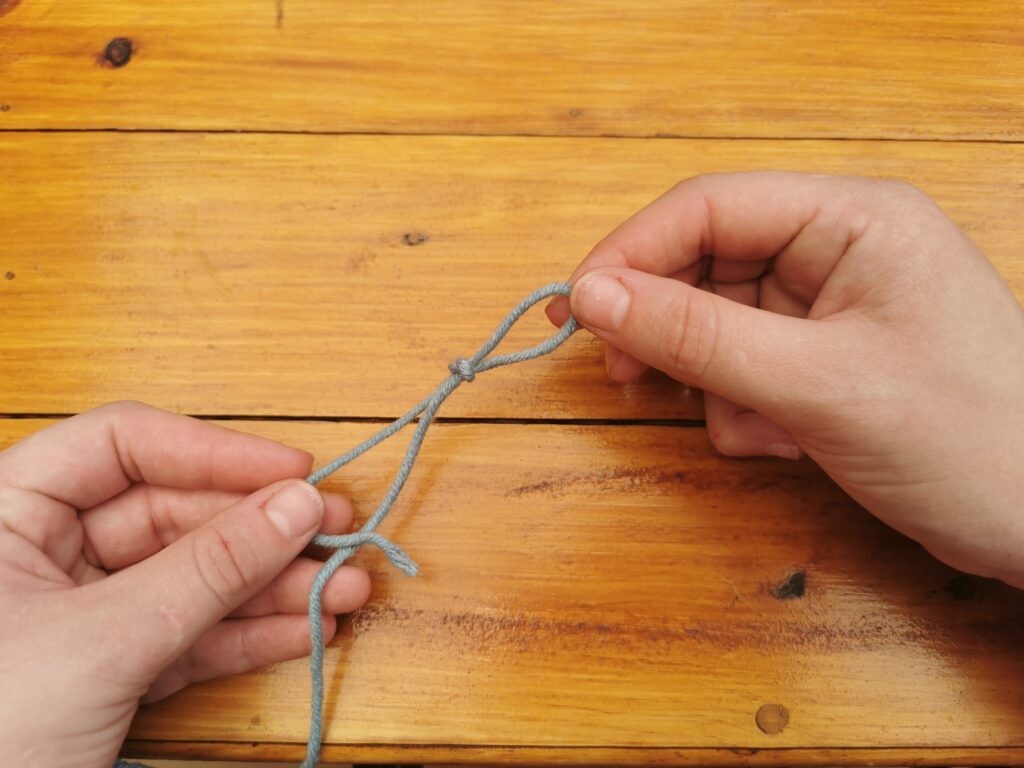
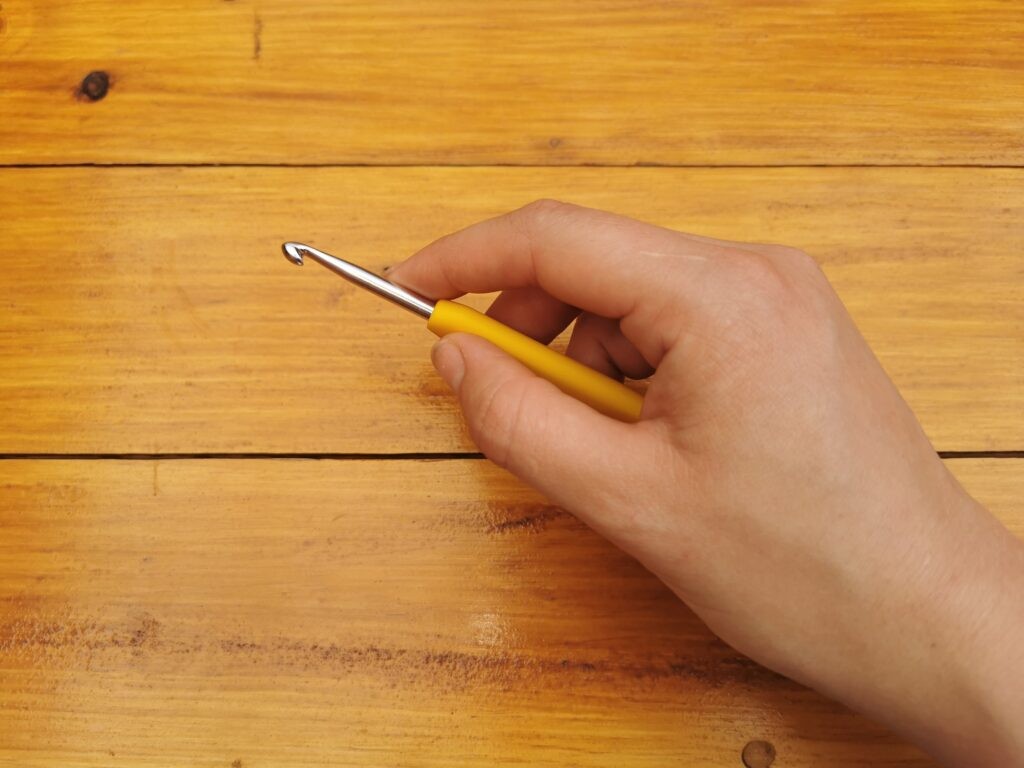
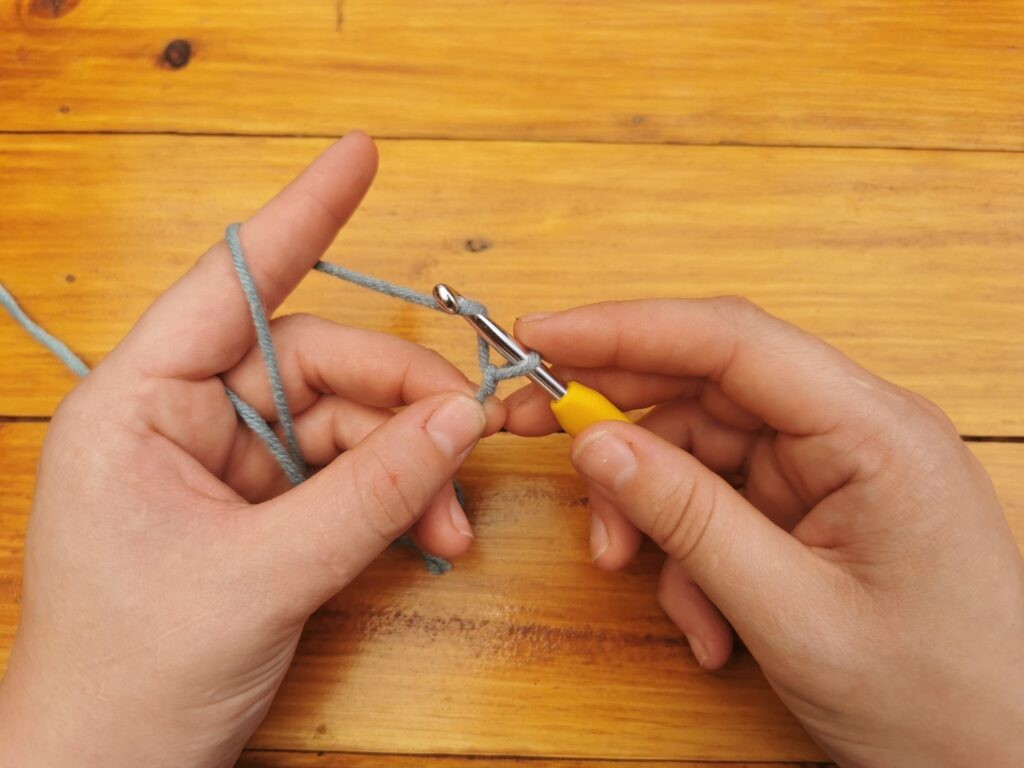
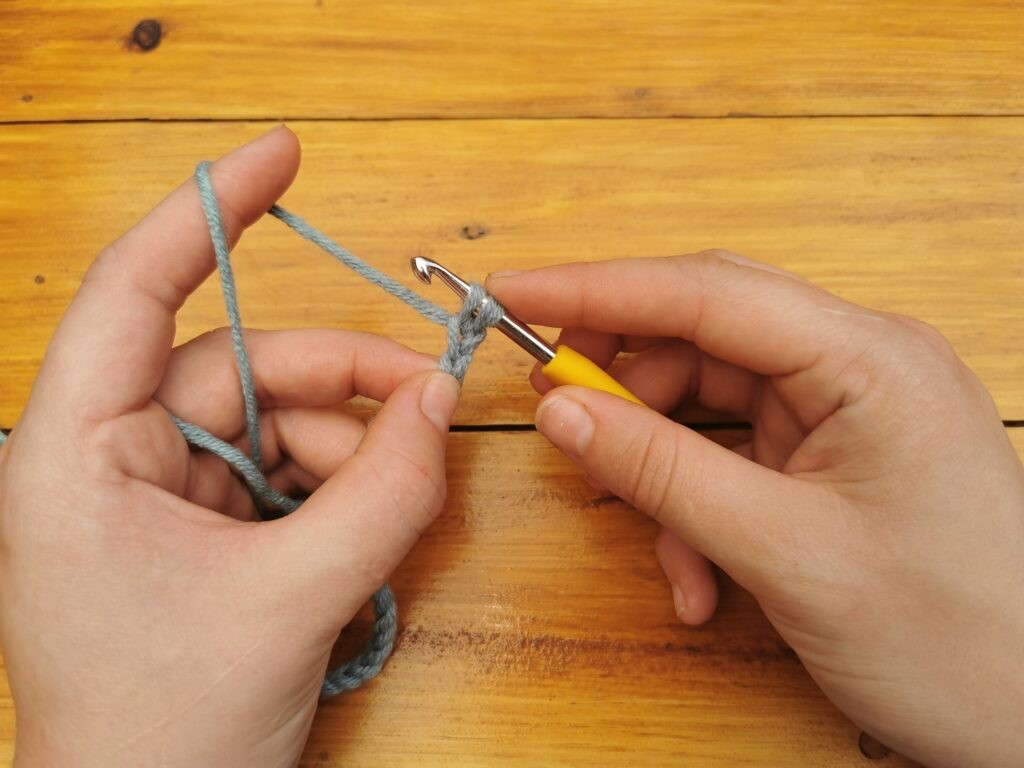
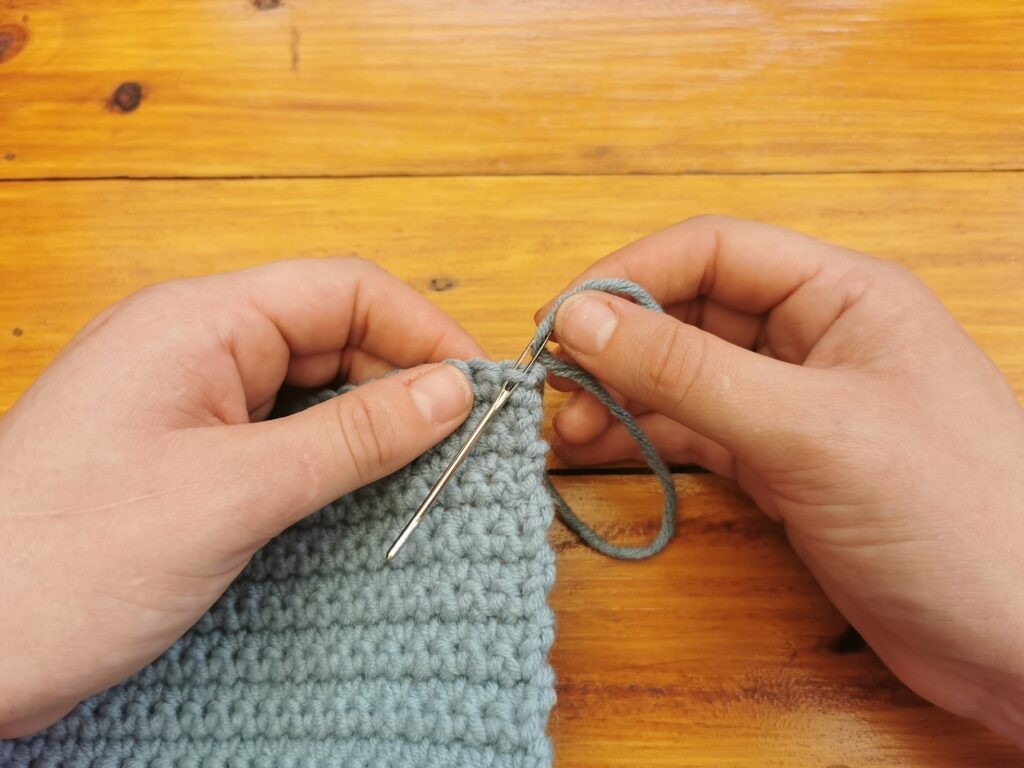
1.4. Understanding Yarn Labels
Yarn labels provide crucial information about the yarn’s weight, recommended hook size, and care instructions. Look for the yarn weight symbol, a number from 0 to 7, indicating the yarn’s thickness. The label will also suggest a corresponding hook size for optimal results. Understanding these labels ensures you select the right materials for your project.
2. Getting Started: The First Steps
2.1. Making a Slip Knot
The first step in crochet is creating a slip knot, which forms the initial loop on your hook. Here’s how:
- Wrap the yarn around your finger, creating a loop.
- Insert the hook into the loop and catch the yarn.
- Pull the yarn through the loop, creating a new loop on the hook.
- Tighten the knot by pulling the yarn tail.
2.2. Holding the Hook and Yarn
There are two common ways to hold the crochet hook: the knife hold and the pencil hold. The knife hold involves holding the hook like a knife, while the pencil hold resembles holding a pencil. Experiment with both to find the grip that feels most comfortable and provides the best control. As for holding the yarn, maintain a relaxed grip to ensure even tension. Wrap the yarn around your fingers to control the flow, keeping it neither too tight nor too loose.
2.3. Making a Foundation Chain
The foundation chain is the base for most crochet projects. Here’s how to create one:
- Hold the hook with the slip knot.
- Yarn over (wrap the yarn around the hook from back to front).
- Pull the yarn through the loop on the hook, creating a new loop.
- Repeat steps 2 and 3 until you reach the desired chain length.
2.4. Understanding Tension
Maintaining consistent tension is crucial for producing even and professional-looking crochet work. Tension refers to the tightness or looseness of your stitches. Practice creating chains with consistent loops, ensuring they are neither too tight nor too loose. Consistent tension will make your projects look uniform and polished.
3. Learning Basic Crochet Stitches
3.1. Single Crochet (SC)
The single crochet is one of the most fundamental stitches in crochet. Here’s how to do it:
- Insert the hook into the second chain from the hook.
- Yarn over and pull through the chain (two loops on hook).
- Yarn over and pull through both loops on the hook (one loop remains).
3.2. Double Crochet (DC)
The double crochet is another essential stitch, taller than the single crochet. Here’s how to do it:
- Yarn over.
- Insert the hook into the third chain from the hook.
- Yarn over and pull through the chain (three loops on hook).
- Yarn over and pull through the first two loops (two loops on hook).
- Yarn over and pull through the remaining two loops (one loop remains).
3.3. Half Double Crochet (HDC)
The half double crochet is between the single and double crochet in height. Here’s how to do it:
- Yarn over.
- Insert the hook into the third chain from the hook.
- Yarn over and pull through the chain (three loops on hook).
- Yarn over and pull through all three loops on the hook (one loop remains).
3.4. Slip Stitch (SS)
The slip stitch is often used to join rounds or move yarn without adding height. Here’s how to do it:
- Insert the hook into the stitch.
- Yarn over and pull through the stitch and the loop on the hook (one loop remains).
Table 2: Comparison of Basic Crochet Stitches
| Stitch | Abbreviation | Height | Uses |
|---|---|---|---|
| Single Crochet | SC | Short | Dense Fabric, Amigurumi |
| Double Crochet | DC | Medium | Blankets, Scarves |
| Half Double Crochet | HDC | Intermediate | Texturized Fabric, Hats |
| Slip Stitch | SS | Very Short | Joining Rounds, Edging |
4. Practicing Your Stitches
4.1. Creating a Practice Swatch
The best way to master new stitches is to create a practice swatch. Start with a foundation chain and work rows of single crochet, double crochet, or half double crochet. Focus on maintaining consistent tension and even edges.
4.2. Tips for Even Edges
To achieve straight edges in your crochet projects, follow these tips:
- Turning Chain: At the end of each row, chain the appropriate number of stitches for the next row’s height (chain 1 for single crochet, chain 3 for double crochet).
- Consistent Stitch Count: Ensure you have the same number of stitches in each row.
- Edge Stitches: Work the first and last stitches of each row carefully, making sure to insert your hook into the correct stitch.
4.3. Correcting Mistakes
Everyone makes mistakes when learning to crochet. To correct them:
- Dropping a Stitch: If you drop a stitch, carefully insert your hook back into the dropped loop and continue crocheting.
- Incorrect Stitch: If you notice an incorrect stitch, gently pull out the hook, unravel the stitches back to the mistake, and redo the section correctly.
- Too Many/Too Few Stitches: If your row doesn’t have the correct number of stitches, add or decrease stitches as needed, trying to keep the changes as unnoticeable as possible.
5. Understanding Crochet Patterns
5.1. Reading Crochet Patterns
Crochet patterns use abbreviations and symbols to represent stitches and instructions. Common abbreviations include SC (single crochet), DC (double crochet), CH (chain), and SS (slip stitch). Learning to read these patterns is essential for creating more complex projects.
5.2. Common Crochet Abbreviations
Table 3: Common Crochet Abbreviations
| Abbreviation | Meaning |
|---|---|
| CH | Chain |
| SC | Single Crochet |
| DC | Double Crochet |
| HDC | Half Double Crochet |
| SS | Slip Stitch |
| ST | Stitch |
| REP | Repeat |
| INC | Increase |
| DEC | Decrease |
5.3. Understanding Stitch Diagrams
Stitch diagrams provide a visual representation of crochet patterns. These diagrams use symbols to represent different stitches and their placement. Learning to read stitch diagrams can be particularly helpful for visual learners.
5.4. Choosing Your First Project
For your first project, choose something simple and small, such as a scarf, dishcloth, or coaster. These projects allow you to practice basic stitches and pattern reading without becoming overwhelmed.
6. Finishing Techniques
6.1. Fastening Off
When you’ve completed your project, it’s time to fasten off, which secures the last stitch and prevents unraveling. Here’s how:
- Cut the yarn, leaving a tail of about 6 inches.
- Yarn over and pull the yarn through the loop on the hook.
- Pull the tail tight to create a knot.
6.2. Weaving in Ends
Weaving in ends hides the yarn tails and secures them, preventing them from unraveling. Use a yarn needle to weave the yarn tails through the back of the stitches, following the direction of the stitches. Trim any excess yarn.
6.3. Blocking
Blocking is a finishing technique that shapes and sets your crochet project. Wet blocking involves dampening the project, pinning it to the desired shape, and allowing it to dry. Steam blocking uses a steamer to relax the fibers and set the shape. Blocking can improve the appearance and drape of your finished piece.
7. Advanced Crochet Techniques
7.1. Changing Colors
Changing colors in crochet allows you to create stripes, patterns, and intricate designs. To change colors:
- Work the last stitch of the old color until you have two loops on the hook.
- Drop the old color and pick up the new color.
- Yarn over with the new color and pull through both loops on the hook.
- Continue crocheting with the new color, carrying the old color along the edge or cutting it and weaving in the ends later.
7.2. Increasing and Decreasing
Increasing and decreasing stitches shape your crochet projects, allowing you to create curves, angles, and three-dimensional shapes.
- Increasing: Work two stitches into one stitch.
- Decreasing: Combine two stitches into one stitch.
7.3. Working in the Round
Working in the round creates seamless, circular projects like hats, amigurumi, and coasters. Start with a magic ring or chain a few stitches and join with a slip stitch to form a ring. Then, work stitches into the ring, increasing as needed to keep the circle flat.
7.4. Texture Stitches
Texture stitches add visual interest and depth to your crochet projects. Examples include:
- Front Post Double Crochet (FPDC): Work a double crochet around the post of the stitch from the previous row, bringing the hook from front to back.
- Back Post Double Crochet (BPDC): Work a double crochet around the post of the stitch from the previous row, bringing the hook from back to front.
- Bobble Stitch: Create a cluster of partially completed double crochets in one stitch, then pull through all loops at once.
8. Crochet Project Ideas for Beginners
8.1. Simple Scarf
A simple scarf is an excellent first project. Choose a bulky yarn and a corresponding hook size. Create a foundation chain to the desired width and work rows of single crochet or double crochet until the scarf reaches the desired length.
8.2. Dishcloth
A dishcloth is a practical and quick project. Use cotton yarn and a corresponding hook size. Create a foundation chain and work rows of single crochet or half double crochet until the dishcloth is square.
8.3. Coaster
A coaster is a small and satisfying project. Use cotton yarn and a corresponding hook size. Work in the round, starting with a magic ring or chain a few stitches and joining with a slip stitch. Increase stitches as needed to keep the circle flat.
8.4. Beanie Hat
A beanie hat is a slightly more challenging but rewarding project. Work in the round, starting with a magic ring or chain a few stitches and joining with a slip stitch. Increase stitches as needed to create the crown of the hat, then work even rows until the hat reaches the desired length.
9. Tips for Improving Your Crochet Skills
9.1. Practice Regularly
Like any skill, crochet improves with practice. Set aside time each day or week to practice your stitches and work on projects.
9.2. Watch Tutorials and Online Courses
Numerous online resources can help you improve your crochet skills. Watch video tutorials, take online courses, and join crochet communities to learn new techniques and get feedback.
9.3. Join a Crochet Community
Joining a crochet community provides support, inspiration, and learning opportunities. Share your projects, ask questions, and learn from other crocheters.
9.4. Experiment with Different Yarns and Hooks
Experimenting with different yarns and hooks can expand your crochet skills and creativity. Try different yarn weights, fiber types, and hook materials to see how they affect your stitches and projects.
10. Common Mistakes and How to Avoid Them
10.1. Incorrect Tension
Incorrect tension can lead to uneven stitches and projects that are too tight or too loose. Practice maintaining consistent tension by adjusting your grip and yarn flow.
10.2. Miscounting Stitches
Miscounting stitches can lead to projects that are the wrong size or shape. Use stitch markers to mark the beginning and end of rows or rounds, and count your stitches regularly.
10.3. Ignoring Gauge
Gauge refers to the number of stitches and rows per inch or centimeter. Ignoring gauge can lead to projects that are the wrong size. Always check your gauge before starting a project and adjust your hook size if necessary.
10.4. Giving Up Too Soon
Crochet can be challenging at first, but it’s important not to give up too soon. Be patient with yourself, practice regularly, and seek help when needed.
11. The Benefits of Crochet for Mental Health
11.1. Stress Reduction
Crochet can be a relaxing and meditative activity that reduces stress and anxiety. The repetitive motions of crochet can calm the mind and promote a sense of well-being.
11.2. Improved Focus
Crochet requires focus and concentration, which can improve your cognitive skills. Focusing on your stitches can help you block out distractions and improve your attention span.
11.3. Sense of Accomplishment
Completing a crochet project can provide a sense of accomplishment and boost your self-esteem. Creating something beautiful and useful with your own hands can be incredibly rewarding.
11.4. Social Connection
Joining a crochet community can provide social connection and support. Sharing your projects and learning from other crocheters can foster a sense of belonging and camaraderie.
12. Resources for Learning Crochet
12.1. Online Tutorials
Numerous online tutorials can help you learn crochet. Websites like YouTube, Craftsy, and Ravelry offer a wealth of free and paid crochet tutorials.
12.2. Crochet Books
Crochet books provide detailed instructions, patterns, and tips for improving your skills. Look for books that are geared towards beginners and cover the basics of crochet.
12.3. Local Yarn Stores
Local yarn stores often offer crochet classes and workshops. These classes provide hands-on instruction and personalized feedback.
12.4. Crochet Apps
Crochet apps can help you track your progress, count stitches, and access patterns and tutorials. Popular crochet apps include Crochet Genius, Stitchboard, and Knitly.
13. Crochet for Charity
13.1. Making Items for Hospitals
Crocheting items for hospitals, such as blankets, hats, and toys, can bring comfort and joy to patients. Many hospitals accept donations of handmade items.
13.2. Supporting Animal Shelters
Crocheting items for animal shelters, such as blankets and toys, can provide warmth and comfort to animals in need. Many animal shelters accept donations of handmade items.
13.3. Creating Items for Homeless Shelters
Crocheting items for homeless shelters, such as scarves, hats, and blankets, can provide warmth and comfort to those in need. Many homeless shelters accept donations of handmade items.
13.4. Participating in Crochet-Along Events
Participating in crochet-along events allows you to crochet for a cause with a group of people. These events often support charitable organizations and provide opportunities for social connection and learning.
14. How to Sell Your Crochet Creations
14.1. Setting Up an Online Shop
Setting up an online shop allows you to sell your crochet creations to a wider audience. Platforms like Etsy, Shopify, and Squarespace provide tools for creating and managing your online store.
14.2. Selling at Craft Fairs
Selling at craft fairs provides opportunities to showcase your crochet creations and connect with customers in person. Research local craft fairs and apply for a booth.
14.3. Consignment Shops
Consignment shops sell your crochet creations on your behalf, taking a percentage of the sale price. Research local consignment shops and inquire about their terms and conditions.
14.4. Social Media Marketing
Social media marketing can help you promote your crochet creations and attract customers. Use platforms like Instagram, Facebook, and Pinterest to showcase your work and engage with your audience.
15. Advanced Project Ideas
15.1. Amigurumi
Amigurumi is the Japanese art of crocheting small, stuffed toys. These projects involve working in the round, increasing and decreasing stitches to create three-dimensional shapes.
15.2. Afghans
Afghans are large blankets made from crocheted squares, strips, or motifs. These projects require patience and attention to detail but can result in beautiful and heirloom-quality pieces.
15.3. Garments
Crocheting garments, such as sweaters, cardigans, and dresses, requires advanced skills in pattern reading, shaping, and fitting. These projects can be challenging but rewarding.
15.4. Lace Crochet
Lace crochet involves creating delicate, intricate patterns using fine yarn and small hooks. These projects require advanced skills in stitch placement and tension control.
16. Innovative Uses of Crochet
16.1. Crochet Jewelry
Crochet jewelry involves creating necklaces, bracelets, and earrings using fine yarn, beads, and wire. These projects can be delicate and intricate.
16.2. Crochet Home Decor
Crochet home décor includes items like pillows, curtains, and wall hangings. These projects can add texture, color, and personality to your living space.
16.3. Crochet Wearable Art
Crochet wearable art involves creating unique, sculptural garments and accessories that blur the lines between fashion and art. These projects often push the boundaries of crochet technique and design.
16.4. Crochet Installations
Crochet installations involve creating large-scale, immersive artworks using crocheted elements. These projects can transform public spaces and engage communities.
17. Sustainability in Crochet
17.1. Using Eco-Friendly Yarns
Using eco-friendly yarns, such as organic cotton, bamboo, and recycled fibers, can reduce the environmental impact of your crochet projects. Look for yarns that are sustainably produced and free from harmful chemicals.
17.2. Upcycling Yarn
Upcycling yarn involves reusing yarn from old projects or garments. This can reduce waste and save money.
17.3. Reducing Waste
Reducing waste in crochet involves using all of your yarn scraps, avoiding excessive packaging, and properly disposing of yarn remnants.
17.4. Supporting Sustainable Brands
Supporting sustainable brands that prioritize environmental and social responsibility can promote ethical practices in the crochet industry.
18. Crochet and Technology
18.1. 3D Printing Crochet Patterns
3D printing crochet patterns allows you to create custom crochet patterns using computer-aided design (CAD) software. This can be particularly useful for complex or geometric designs.
18.2. Using Crochet Design Software
Crochet design software can help you create and visualize your crochet patterns. These programs often include features for stitch charting, colorwork, and pattern editing.
18.3. Sharing Projects Online
Sharing your crochet projects online through social media, blogs, and online communities can connect you with other crocheters and inspire creativity.
18.4. Learning from Online Communities
Learning from online communities provides access to a wealth of knowledge, support, and inspiration. Participate in discussions, ask questions, and share your expertise.
19. The Future of Crochet
19.1. Innovations in Yarn Technology
Innovations in yarn technology are leading to the development of new and improved yarns, such as self-striping yarns, color-changing yarns, and performance yarns.
19.2. New Crochet Techniques
New crochet techniques are constantly emerging, pushing the boundaries of what is possible with crochet. These techniques often involve combining crochet with other crafts, such as knitting, embroidery, and weaving.
19.3. Increased Focus on Sustainability
An increased focus on sustainability is driving the development of eco-friendly yarns and ethical practices in the crochet industry.
19.4. Growing Popularity of Crochet
The growing popularity of crochet is leading to increased awareness, accessibility, and innovation in the craft.
20. Conclusion: Start Your Crochet Journey Today
Learning to crochet is a rewarding and fulfilling experience that can bring joy, creativity, and relaxation to your life. With the right guidance and practice, anyone can master this versatile craft. Visit LEARNS.EDU.VN for more detailed guides, tutorials, and resources to enhance your crochet skills. Whether you’re looking to create beautiful handmade gifts, express your creativity, or simply unwind after a long day, crochet offers endless possibilities. So, pick up a hook and some yarn, and start your crochet journey today!
Need more guidance or looking for specific crochet patterns? Visit learns.edu.vn at 123 Education Way, Learnville, CA 90210, United States, or contact us via WhatsApp at +1 555-555-1212.
FAQ: Frequently Asked Questions About Learning to Crochet
1. How long does it take to learn how to crochet?
It can take a few hours to learn the basic stitches, but mastering crochet can take weeks or months of practice.
2. What is the easiest crochet stitch to learn?
The chain stitch is the easiest to learn, followed by the single crochet.
3. What supplies do I need to start crocheting?
You’ll need yarn, a crochet hook, scissors, and a yarn needle.
4. How do I choose the right size crochet hook?
The yarn label usually recommends a hook size. Follow this recommendation for best results.
5. How do I read a crochet pattern?
Learn common crochet abbreviations and symbols. Many patterns also include stitch diagrams.
6. What is tension in crochet?
Tension refers to the tightness or looseness of your stitches. Consistent tension is crucial for even results.
7. How do I fix mistakes in my crochet?
Gently unravel the stitches back to the mistake and redo the section correctly.
8. What are some easy crochet projects for beginners?
Simple scarves, dishcloths, and coasters are great for beginners.
9. How do I weave in the ends of my crochet project?
Use a yarn needle to weave the yarn tails through the back of the stitches.
10. How do I block my crochet project?
Dampen the project, pin it to the desired shape, and allow it to dry, or use steam to relax the fibers.
